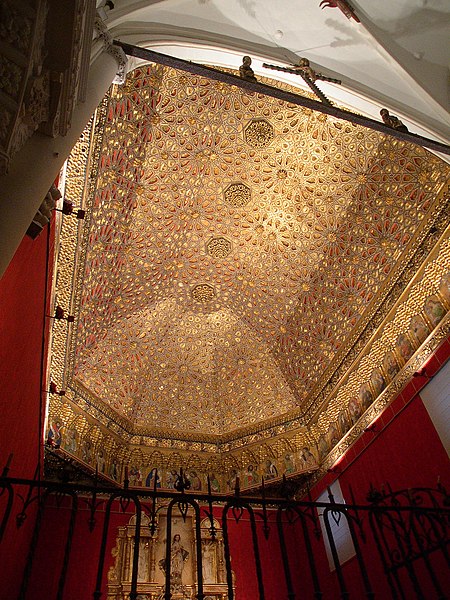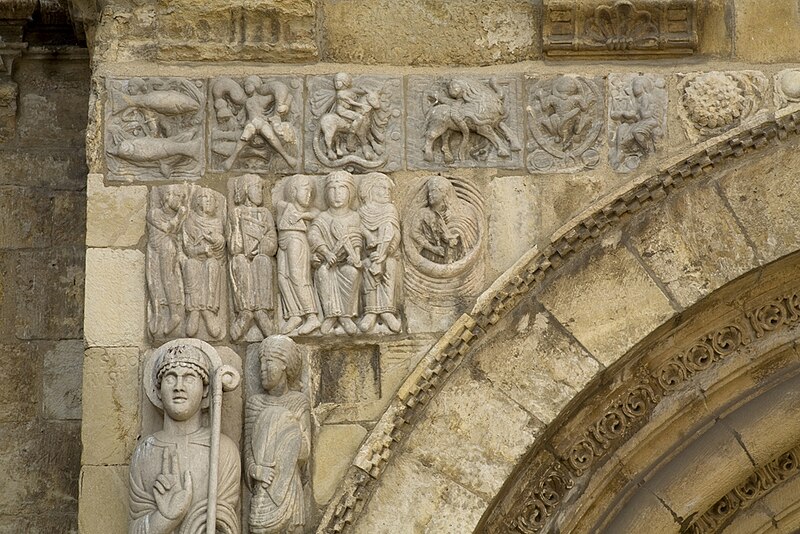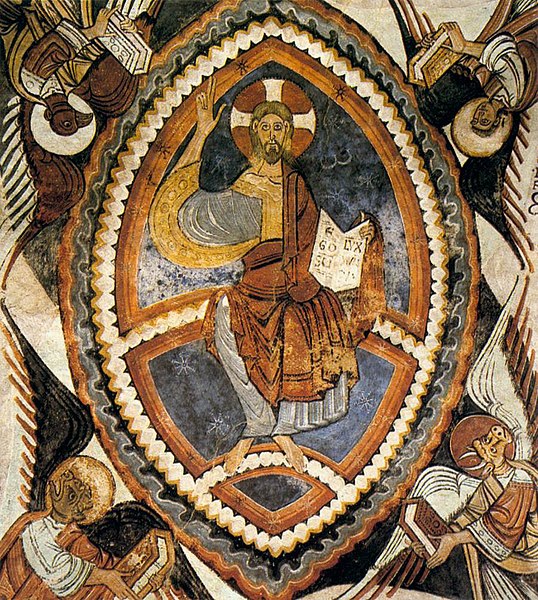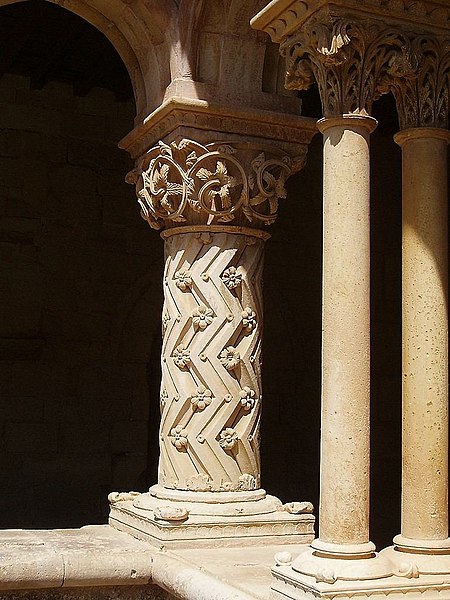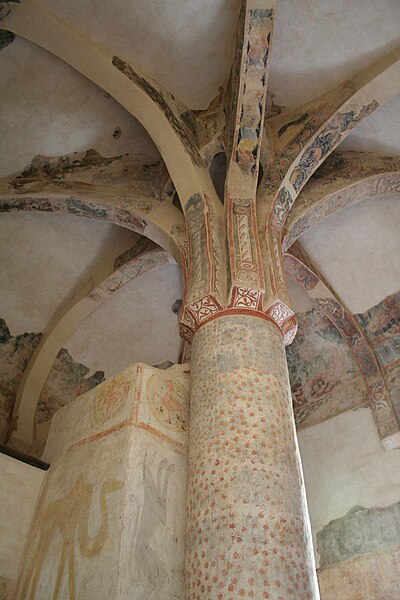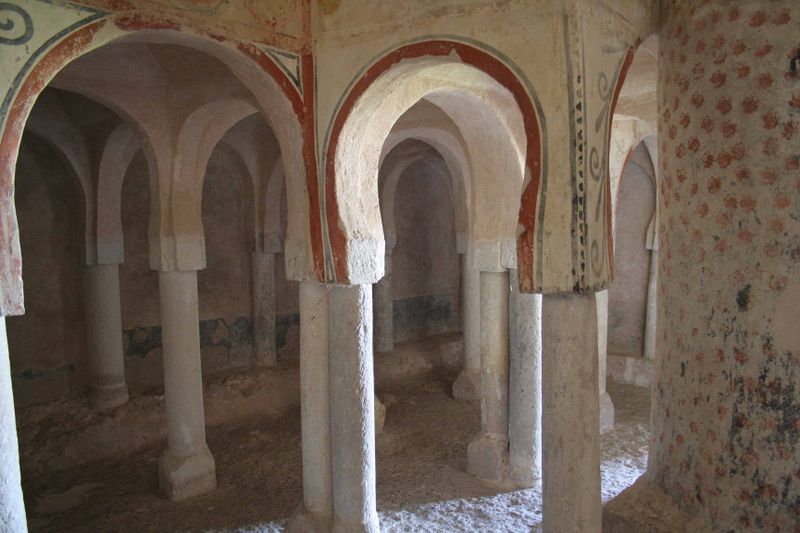Showing posts with label Medeltiden. Show all posts
Showing posts with label Medeltiden. Show all posts
Friday, 30 August 2013
5 Medieval Women Writers
Leonor López de Córdoba, author of Memoirs of Doña Leonor López de Córdoba.
Her short autobiography (of nine pages) includes an eyewitness narrative of the siege of Carmona (Seville). It was written in the early 15th century.
Teresa of Cartagena, author of The Grove of the Sick and Wonder at the Works of God (Admiratio Operum Dei).
She was a Spanish nun, who became deaf mute in the 1450s. Her works are the earliest feminist texts in Spanish.
Florencia Pinar, author of several poems.
They were included in the lyric collections of the period (late 15th c).
Constanza de Castilla, author of a Devotionary (ca. 1474).
She was the prioress of Santo Domingo el Real (Madrid).
Isabel de Villena, author of Vita Christi.
She also wrote several treatises and a mystical work, the Speculum Animae, now lost.
Labels:
15. Jahrhundert,
15th century,
Books,
Bücher,
Medeltiden,
Medieval,
Middelalderen,
Middeleeuwen,
Middle Ages,
Women,
Women Writers,
Writers,
книг
Thursday, 23 May 2013
Knights and Statues
A seated
statue of St. James has been preserved in the Abbey of Las Huelgas (Burgos), where
knights of the Order of Santiago armed themselves. The sculpture’s right arm
could be moved by means of a cord, and was used in the ceremony of adoubement
in the mid-thirteenth century. The saint
tapped the side of the sword’s blade onto the king’s shoulders when the
ceremony was performed, as knighthood could not be conferred by anyone of lower
rank. Tradition says that it was the invention of Saint Ferdinand III. Four
other kings of Castile were armed in this way, as well as Edward I of England. Afterwards,
- on November 1, 1254 - Edward
and Eleanor of Castile were married in
the Abbey of Santa María la Real de Las Huelgas.
http://upload.wikimedia.org/wikipedia/commons/a/af/Monasterio_de_Sta._Maria_la_Real_de_Huelgas_-_Marioneta_del_.jpg
http://upload.wikimedia.org/wikipedia/commons/a/af/Monasterio_de_Sta._Maria_la_Real_de_Huelgas_-_Marioneta_del_.jpg
The main
character of The Youthful Deeds of Rodrigo advises King Ferdinand I the Great
to be dubbed a knight by St James (in Santiago de Compostela), as the only way
to gain authority. Consequently, he would recognize no authority other than the
Apostle’s. Rodrigo mentions the patronage of St. James and the prayer vigil,
and tells the king “to arm himself during the Mass.” (“Rey, fasta que
non te armases non devías tener reinado; /ca no esperas palmada de moro nin de
christiano, / mas ve velar al padrón de Santiago; / quando oyeres la missa,
ármate con tu mano (…)” (1)
There is
also another remarkable reference to a statue in this epic poem. The Castilians
carved a stone sculpture featuring count Fernán González; then they swore
loyalty to it and, therefore, became its vassals. Hence they could not
recognise another lord – even the “original” one – until they had broken their symbolic
links to the stone.
“(…) the Castilians (…) / neither kissed his
hand nor called him their lord, / as they had paid homage to a stone; they
carried it around in a cart / as their lord, until they met the count [Fernán González]” [(…) los
castellanos (…) / no l’ bessaron la mano, nin señor no l’ llamaron, / ca avían
fecho omenaje a una piedra que traxieran en el carro, / que traían por señor,
fasta que fallaron al conde (Fernán González).”] (2)
(1) Épica medieval española (Carlos Alvar, Manuel
Alvar eds.); Madrid: Cátedra, 1991, 138, vv. 653-56.
(2) Ibíd., 106, vv. 9-12.
Labels:
accolade,
fealty,
knighthood,
Medeltiden,
Middelalderen,
Middeleeuwen,
Middle Ages,
Mittelalter,
Moyen Âge,
riddere,
ridders,
Ritter,
vassalage,
рыцари
Tuesday, 21 May 2013
Medieval Castile and León: 10 Must-See Places
 |
| Church of Saint Mary the Great, Toro (Province of Zamora). 12th - 13th c |
Royal Convent of Santa Clara, Tordesillas (Province of Valladolid) 14th c
Basilica of San Isidoro, León. 11th -12th c.
http://www.sanisidorodeleon.net/ind_english.html
(Province of Palencia)
12th -13th c
Hermitage of San Baudelio de Berlanga, the Sixtine Chapel of Mozarabic art, 11th c
(Casillas de Berlanga, Province of Soria)
http://berlanga.blogia.com/2007/032902-la-palmera-sagrada.php

Abbey of Santa María la Real de las Huelgas, Burgos. 12th c.
The monastery houses the Museo de Ricas Telas, a showcase of medieval textiles.
http://www.monasteriodelashuelgas.org/historia.html
http://www.monasteriodelashuelgas.org/arte.html
http://www.paradoxplace.com/Photo%20Pages/Spain/Camino_de_Santiago/Burgos/SM_Real_Huelgas/Huelgas_Nunnery.htm

Gormaz Castle (10th c), a 390-meter- long citadel placed on a hill.
It was owned by the Cid (ca.1087).
(Province of Soria)
http://www.spain.info/en_GB/conoce/monumentos/soria/castillo_de_gormaz.html

Alcázar of Segovia
12th - 16th c
Basilica of San Vicente, Ávila. 12th c
Rupestrian Church of Olleros de Pisuerga (Province of Palencia) 7th- 11th centuries
http://www.arquivoltas.com/8-palencia/02-Olleros00.htm
Map of other hermitages nearby:
http://villacibio.blogspot.com.es/2009/02/ermitas-rupestres-del-alto-ebro-y_1033.html
Labels:
Medeltiden,
Medieval,
Middelalderen,
Middeleeuwen,
Middle Ages,
Mittelalter,
Moyen Âge,
Must-See,
Must-See Places,
Reise,
Reizen,
Rejser,
Spain,
Spanien,
travel,
스페인,
여행,
중세,
中世
Thursday, 24 January 2013
Notable Codices
Codex Argenteus (The Silver Bible), 6th c translation of the Bible into the Gothic language.
Codex Amiatinus, 8th c, the earliest surviving manuscript of the nearly complete Bible (Latin Vulgate).
Codex Abrogans, 8th c glossary from Latin into Old High German
Codex Augiensis, 9th c manuscript of the Pauline Epistles in double parallel columns of Greek and Latin.
The Leningrad Codex (1008) is the oldest complete manuscript of the Hebrew Bible in Hebrew.
Codex Calixtinus, 12th c advice for pilgrims following the Way of St James.
Codex Cumanicus (12th c)
Wiesbaden Codex (ca. 1200), containing the collected works of Hildegard of Bingen. It is a giant codex, weighing 15 kg. A lingua ignota, one of the earliest known constructed languages, is described in it.
In Lebor Ogaim (The book of Ogams) (1390) is an Old Irish treatise on the ogham alphabet.
Flateyjarbók (Flatey Book), 14th c. The sagas of the Norse kings are compiled in this Icelandic manuscript.
Libellus de Medicinalibus Indorum Herbis (Little Book of the Medicinal Herbs of the Indians), translated by Juan Badiano from a Nahuatl original (1552). It is a book describing herbal remedies used by the Aztecs.
Codex Amiatinus, 8th c, the earliest surviving manuscript of the nearly complete Bible (Latin Vulgate).
Codex Abrogans, 8th c glossary from Latin into Old High German
Codex Augiensis, 9th c manuscript of the Pauline Epistles in double parallel columns of Greek and Latin.
The Leningrad Codex (1008) is the oldest complete manuscript of the Hebrew Bible in Hebrew.
Codex Calixtinus, 12th c advice for pilgrims following the Way of St James.
Codex Cumanicus (12th c)
Wiesbaden Codex (ca. 1200), containing the collected works of Hildegard of Bingen. It is a giant codex, weighing 15 kg. A lingua ignota, one of the earliest known constructed languages, is described in it.
In Lebor Ogaim (The book of Ogams) (1390) is an Old Irish treatise on the ogham alphabet.
Flateyjarbók (Flatey Book), 14th c. The sagas of the Norse kings are compiled in this Icelandic manuscript.
Libellus de Medicinalibus Indorum Herbis (Little Book of the Medicinal Herbs of the Indians), translated by Juan Badiano from a Nahuatl original (1552). It is a book describing herbal remedies used by the Aztecs.
Labels:
codex,
codices,
kodeksów,
Medeltiden,
Middelalderen,
Middeleeuwen,
Middle Ages,
Mittelalter,
Średniowiecze,
बाइबिल,
বাইবেল,
ਬਾਈਬਲ,
성경,
중세,
中世,
中世紀,
聖書,
聖經
Subscribe to:
Posts (Atom)

